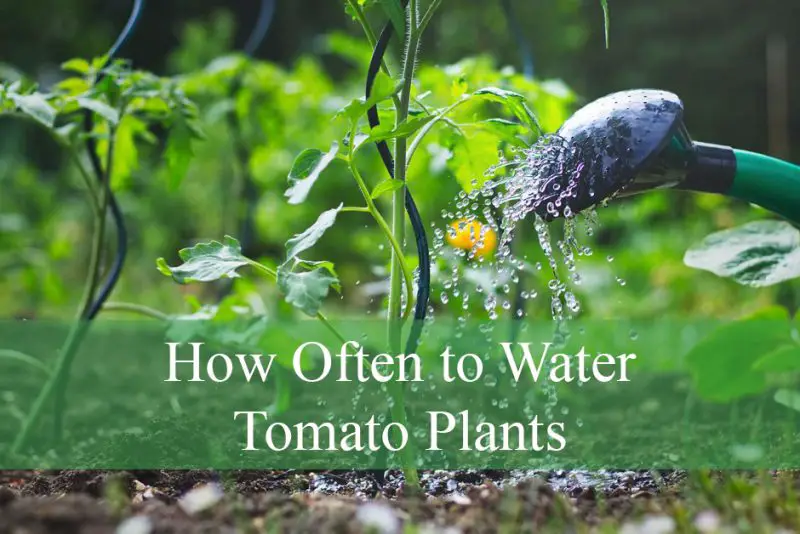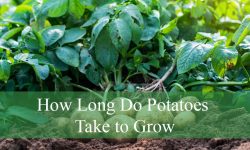Tomatoes are among the most beloved crops in home gardens, and for good reason. They are versatile, delicious, and relatively easy to grow. However, one aspect that often confuses even seasoned gardeners is how often to water tomato plants. The frequency and method of watering can greatly impact the overall health of the plants and the quality of the fruit they produce. Understanding the specific needs of tomato plants throughout their growth cycle is essential for cultivating juicy, healthy tomatoes.
Watering tomato plants is not a one-size-fits-all task. It varies depending on factors such as plant size, stage of growth, weather conditions, soil type, and whether the plants are in containers or in the ground. In this detailed guide, we’ll break down everything you need to know about watering tomato plants effectively—from seedlings to mature fruiting plants—to ensure a bountiful harvest.
The Importance of Proper Watering for Tomato Plants

Tomato plants rely heavily on a consistent water supply to thrive. Water is essential not only for plant hydration but also for nutrient absorption and fruit development. Inconsistent watering can lead to a range of problems including blossom end rot, fruit cracking, and poor fruit flavor. Proper watering ensures that the plants grow steadily, develop strong roots, and produce fruits that are plump and rich in flavor.
Tomato plants have deep roots that can access moisture from below the soil surface, but they still need supplemental watering, especially during dry periods. Overwatering and underwatering are both detrimental. Too much water can suffocate the roots and promote diseases, while too little water can cause wilting and stress that affect fruit development. The key is finding the right balance and adapting to the plant’s needs as they change over time.
How Watering Needs Change Through Tomato Growth Stages
Understanding the different growth stages of tomato plants is crucial in determining how often to water them. Each stage has specific needs, and adjusting your watering schedule accordingly will greatly enhance plant health and productivity.
In the seedling stage, tomato plants require consistent moisture in the top layer of soil. This helps young roots establish themselves and promotes healthy early growth. Seedlings are sensitive to both drought and excess moisture, so the soil should be kept moist but not soggy. Watering every day or every other day may be necessary, especially if temperatures are high.
As the plants mature and enter the vegetative stage, their roots grow deeper, and they become more resilient. At this point, it’s important to water deeply but less frequently. Deep watering encourages the roots to grow down into the soil, which makes the plants more drought-tolerant and stable. During this stage, watering two to three times per week is usually sufficient, depending on rainfall and temperature.
When tomato plants begin to flower and set fruit, their water needs increase. Fruit development requires a steady supply of moisture, and any fluctuation can lead to issues like blossom end rot or cracking. Watering consistently during this phase is critical. The frequency may return to daily watering during very hot periods, particularly if the plants are in containers that dry out faster.
Soil Type and Its Role in Watering Frequency
The type of soil in which tomato plants grow plays a major role in how often they should be watered. Sandy soils drain quickly and dry out faster, requiring more frequent watering. Clay soils retain moisture longer but can become compacted and waterlogged if overwatered. Loamy soil, which is a balanced mix of sand, silt, and clay, is ideal for tomatoes as it holds moisture well while still allowing good drainage.
If you are planting in sandy soil, you’ll likely need to water more often, but in smaller amounts to avoid runoff. With clay soil, be cautious about overwatering, as it can take longer to dry out. Adding organic matter like compost can improve any soil type by enhancing its moisture-holding capacity and overall structure. Knowing your soil’s characteristics will help you adjust your watering practices for the best results.
The Impact of Climate and Weather on Watering
Local climate and current weather conditions significantly affect how often tomato plants need to be watered. In hot, dry climates, the soil dries out quickly, and plants may need daily watering, especially during peak summer months. Conversely, in cooler or more humid regions, watering can be reduced since evaporation is slower and the soil retains moisture longer.
Rainfall also influences your watering schedule. After a good rain, you can skip watering for a day or two, but it’s important to monitor soil moisture to avoid overwatering. During heatwaves or drought conditions, more frequent watering may be necessary to prevent stress. Using mulch can help stabilize soil moisture and reduce the frequency of watering by slowing evaporation.
Wind is another factor that can dry out soil quickly, especially for container-grown plants. On windy days, you may need to check your plants more often to ensure they’re not drying out. Ultimately, being observant and responsive to changing weather conditions is key to providing tomato plants with the right amount of water.
Container vs. Ground: Different Needs
Tomato plants grown in containers have different watering needs compared to those planted in the ground. Containers tend to dry out more quickly due to increased exposure to heat and air. As a result, container-grown tomatoes typically require more frequent watering—often once or even twice a day during hot weather.
The size and material of the container also influence watering frequency. Smaller pots dry out faster than larger ones, and porous materials like clay lose moisture more quickly than plastic or glazed containers. It’s essential to monitor container soil moisture closely and water whenever the top inch of soil feels dry.
In-ground tomato plants benefit from the insulating properties of the earth, which retains moisture longer. These plants usually require less frequent watering, especially if the soil has been amended with organic matter and covered with mulch. Still, they should be checked regularly, particularly during dry spells or when fruits are forming.
Signs of Overwatering and Underwatering
Recognizing the signs of overwatering and underwatering can help you make timely adjustments. Overwatered tomato plants may appear wilted despite having wet soil. The leaves may turn yellow, and root rot can develop in severe cases. The soil often smells musty or sour, indicating poor drainage and excess moisture.
Underwatered plants also wilt, but in a more brittle, dry manner. The leaves may curl inward, turn brown at the edges, and eventually drop. Fruits may be small, dry, or develop blossom end rot due to inconsistent watering. The soil around underwatered plants will feel dry several inches below the surface.
To avoid both extremes, aim to keep the soil consistently moist but not soaked. Checking soil moisture by inserting your finger 1–2 inches into the soil is a simple and effective method. If it feels dry at that depth, it’s time to water.
Morning vs. Evening: When to Water Tomato Plants
The time of day you water tomato plants can influence their health. Watering in the morning is generally recommended. It allows the plants to absorb moisture before the heat of the day, reducing stress and maximizing nutrient uptake. Morning watering also ensures that the foliage has time to dry before nightfall, reducing the risk of fungal diseases.
Evening watering is less ideal because water remaining on the leaves overnight creates a favorable environment for mold and mildew. However, if morning watering isn’t possible and the plants are wilting, watering in the evening is better than letting them suffer. Just be careful to water at the base and avoid wetting the leaves.
Using drip irrigation or soaker hoses is a great way to deliver water directly to the root zone while keeping the foliage dry. This method not only conserves water but also supports healthier tomato plants by reducing disease pressure.
How Much Water Do Tomato Plants Need?
The amount of water tomato plants need depends on their size, environment, and growth stage. On average, mature tomato plants require about 1 to 1.5 inches of water per week. This includes rainfall and supplemental irrigation. During hot, dry spells, the need may increase to 2 inches or more per week.
Rather than focusing solely on measurements, it’s more practical to pay attention to soil moisture and plant appearance. Deep watering that penetrates at least 6 inches into the soil is more beneficial than frequent shallow watering. This encourages the development of deep, strong roots.
For container-grown plants, water until it starts to drain from the bottom of the pot. Ensure that containers have drainage holes to prevent waterlogging. Consistent monitoring and adjustment will ensure your tomato plants receive the right amount of hydration throughout the season.
Adjusting Your Watering Schedule Throughout the Season
Tomato plants’ watering needs change as the season progresses. Early in the season, when plants are small, their water needs are modest. As the plants grow and begin to flower and fruit, they require more frequent and deeper watering.
During mid to late summer, especially in hot regions, plants may need to be watered daily. However, by late summer or early fall, as fruiting slows down and temperatures begin to drop, watering can be gradually reduced. Reducing water near the end of the season can even help concentrate the flavor of ripening fruits.
Always be prepared to adjust based on changing weather patterns. A flexible watering schedule, guided by observation rather than a rigid timetable, will yield the best results.
FAQ About How Often to Water Tomato Plants
How often should I water tomato plants in hot weather?
In hot weather, especially during peak summer, tomato plants may need to be watered once a day or even twice for container-grown plants. The soil dries out quickly, so it’s important to check the moisture level daily and ensure the top 1–2 inches remain consistently moist.
Can I water tomato plants at night?
It’s not recommended to water tomato plants at night because moisture lingering on the leaves can encourage fungal diseases. If evening watering is unavoidable, water only at the base and avoid wetting the foliage.
Is it better to water tomato plants in the morning or evening?
Watering in the morning is ideal. It allows the plants to absorb moisture before the heat of the day and gives the leaves time to dry, which helps prevent disease. Morning watering also supports better nutrient uptake and root function.
How can I tell if I’m overwatering my tomato plants?
Overwatering symptoms include yellowing leaves, wilting despite moist soil, and a musty smell around the roots. If the soil stays soggy or waterlogged, it can lead to root rot. Always let the top layer of soil dry slightly between waterings.
What’s the best way to water tomato plants for deep root growth?
The best method is deep, infrequent watering that penetrates at least 6 inches into the soil. This encourages roots to grow downward rather than staying near the surface. Drip irrigation or slow soaking at the base of the plant is highly effective.
Do tomato plants in containers need more water?
Yes, tomato plants in containers typically need more frequent watering than those in the ground because containers dry out faster. During warm weather, this may mean watering once or twice per day, depending on the size and material of the pot.
How much water do tomato plants need weekly?
On average, tomato plants require about 1 to 1.5 inches of water per week, including rainfall. In very hot or dry conditions, this may increase to 2 inches or more. Monitor soil moisture regularly and adjust based on weather and plant size.
Can inconsistent watering affect tomato fruit?
Yes, irregular watering can lead to problems such as blossom end rot, fruit cracking, and reduced flavor. Maintaining consistent soil moisture throughout the fruiting stage is essential for juicy, healthy tomatoes.
Final Tips for Watering Success
Growing juicy, healthy tomatoes requires more than just pouring water onto your plants. It’s about understanding their needs, monitoring soil moisture, and responding to environmental cues. Consistency is key. Whether you’re growing in containers or in the ground, in sandy soil or loam, under blazing sun or partial shade—paying close attention to how your plants respond to watering will guide you to success.
Using mulch around your tomato plants is an excellent way to retain soil moisture and reduce the frequency of watering. Organic mulches like straw, compost, or shredded leaves help regulate soil temperature and reduce evaporation. In addition, maintaining good drainage and ensuring your soil has enough organic matter will keep the root zone healthy and hydrated.
In the end, the secret to perfect tomatoes isn’t just sun and soil—it’s mastering the art of watering. With the right knowledge and practices, you’ll enjoy plump, delicious tomatoes all season long.






